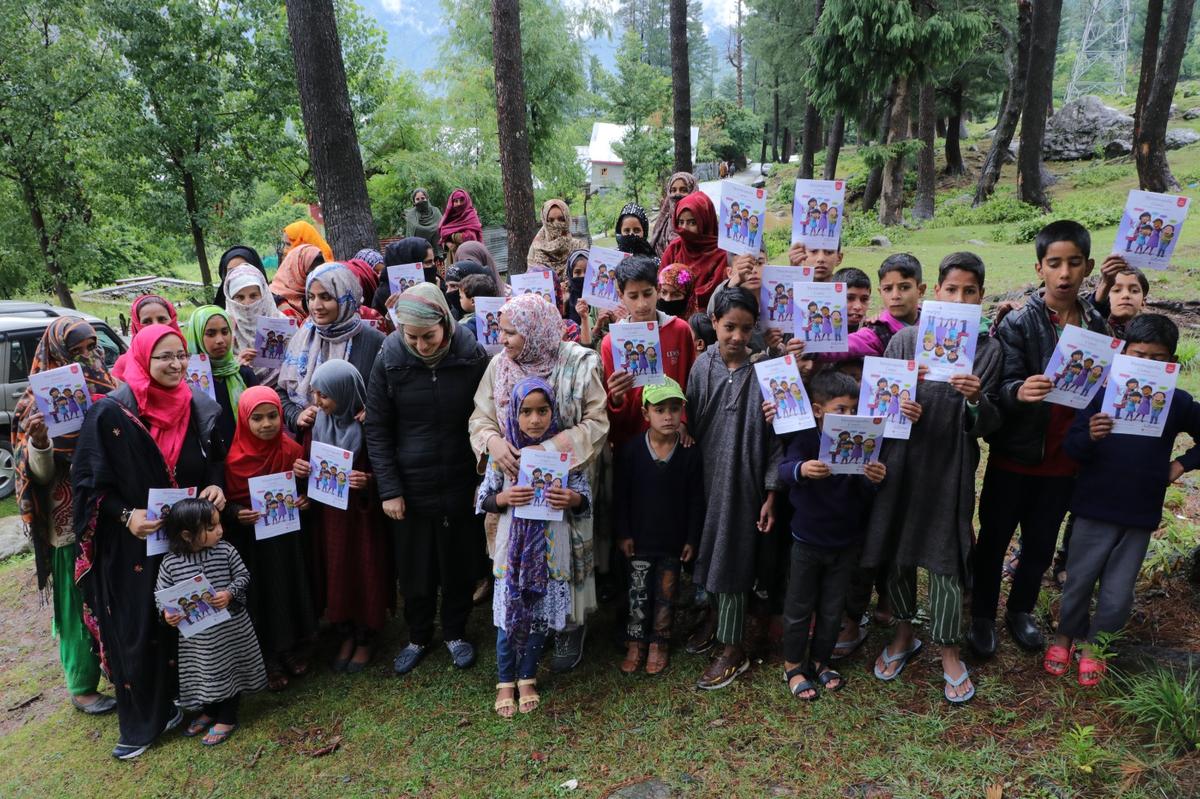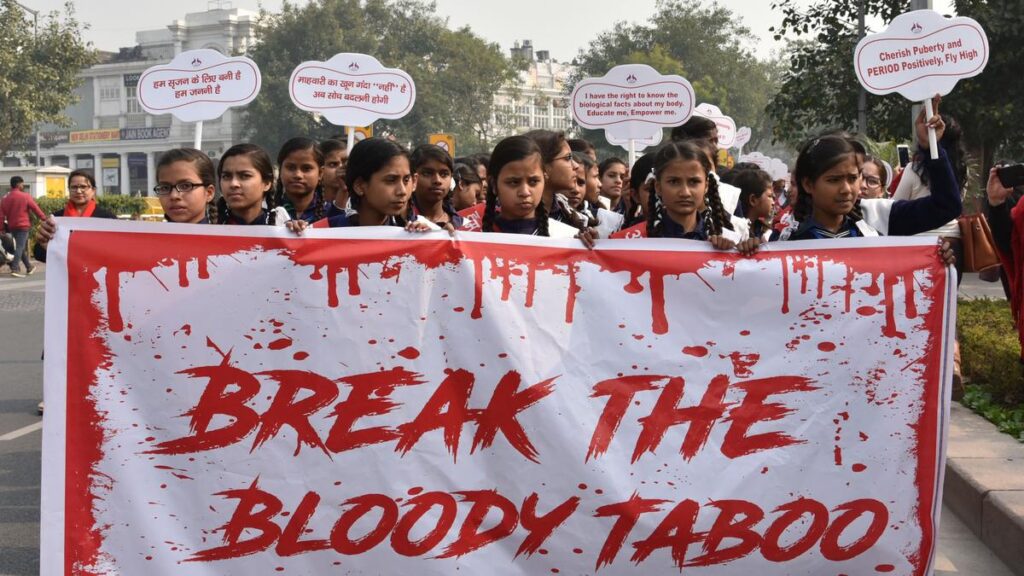In Bihar, Lalita*, a 40-year-old woman, spent decades managing her periods with torn scraps of cloth, unaware of safer alternatives. Her story is neither rare nor new: millions of women in rural India still navigate menstruation without access to hygienic products. From reproductive tract infections to untreated gynaecological issues linked to poor menstrual care, there continue to remain glaring health inequities between urban and rural India.
A study analysing data from the National Family Health Survey – 5 (NFHS-%) found that only 42% of adolescent women in India exclusively used hygienic methods during menstruation, and their exclusive use varied from 23% in Uttar Pradesh to 85% in Tamil Nadu. In Bihar, where over 88% of the population lives in rural areas, according to the Census of India 2011, uptake remains low: around 56% of rural women in Bihar use hygienic methods compared to 74.7% in urban areas. These disparities heighten vulnerability to a range of health risks.
“The urban-rural gap in the use of hygienic products during menstruation persists due to a combination of deep-seated economic realities in rural households,” said Karan Babbar, assistant professor at Plaksha University, Punjab.
The vulnerability is compounded amongst marginalised communities: for instance amongst Juangs, an ethnic group residing primarily in Keonjhar and Angul districts of Odisha, 85% of women still rely on old cloth during menstruation, as per a 2023 study, as long distances from markets, lack of awareness and high costs create a barrier to safer alternatives. Despite 71% experiencing menstrual health issues, only a third seek treatment. Deeply-entrenched social taboos that exclude most women from religious or social activities during their periods further complicate the problem.

The cost of neglect
Poor menstrual hygiene does not exist in isolation. It contributes directly towards school dropout rates, reduced workplace participation and chronic reproductive health issues. 23% of girls in India drop out of school after they begin menstruating, according to research by Mumbai-based NGO, Dasra. The reason for this is often a lack of toilets and sanitary products. The NGO’s report also points out that although the government met its target of building over 4,00,000 toilets in schools across India, this did not provide a complete solution: key stakeholders must ensure regular maintenance and repair of these toilets.
Economic factors deepen this challenge. “For a family with a limited, often precarious income, the choice is not between two brands of sanitary pads; it is buying a pack of pads or buying essentials like vegetables and milk. This makes pads a non-essential luxury”, said Mr. Babbar. Women’s lack of financial autonomy — they often have to ask men of the family for money — adds to the difficulties in purchasing.

The disparities between rural and urban India are clear in the NFHS-5 (2019-21): it reveals that the the utilisation of hygienic materials (sanitary napkins, locally prepared napkins, tampons, and menstrual cups) during menstruation among adolescent women in rural India stood at only 43%, whereas in urban areas, it is 68%, indicating a significant gap between rural and urban areas. The rural-urban gap in using hygienic menstrual materials exceeds 20 percentage points in several States, including Madhya Pradesh (36 pp gap), Odisha (26 pp), Uttar Pradesh (23 pp), and Rajasthan (21 pp), highlighting regional disparities.

From a clinical standpoint, Aby Koshy, consultant gynaecologist and specialist in reproductive medicine, Sunrise Hospital, Kochi, notes that even in States such as Kerala, where poor menstrual hygiene is rare, health risks remain. “Gynaecologists not so frequently encounter cases involving genital allergies [which could be due to sanitary pads] and also vaginal infections, which are typically either bacterial or fungal in nature. Differentiating between these two types of infections becomes crucial in deciding the nature of treatment.” He adds that prolonged usage of unclean or damp cloth is harmful. “It creates a warm, humid environment which is an ideal condition for the overgrowth of fungi, particularly yeast, leading to a fungal infection.”
Mr. Babar points to a triad of barriers: affordability, distribution and awareness. “These do not exist side by side; they interact in a powerful, negative feedback loop. Low awareness lowers perceived value, which reduces demand, weakens distribution and makes access even harder.”
The human cost is immense. “A girl who gets her period at a school without a separate, functional toilet with running water and a proper disposal system faces a crisis of dignity. The fear of being shamed for a stain is immense. The simplest solution for her is to stay home,” he adds.
Missing four to five days a month means falling behind academically by nearly 25%, often pushing girls to drop out entirely. “For the individual, it limits her lifetime earning potential, and traps her in an intergenerational cycle of poverty. For the nation, it suppresses our female labour force participation and leaves a vast pool of human capital untapped, dragging down our GDP,” says Mr. Babbar.

Education is the most powerful lever for change, say experts. An awareness programme held in Kashmir about menstruation.
| Photo Credit:
Courtesy, Aditi Gupta, Menstrupedia
Breaking the cycle
There is now global recognition of menstrual health as a public and human rights issue and period poverty contributing to widening economic gaps. In 2011, the Indian government launched the Menstrual Hygiene Scheme, to distribute sanitary pads alongside organising educational awareness programmes and initiatives for the safe disposal of pads. However, the distribution of period products was affected significantly by the COVID-19 pandemic.
According to a recent evaluation of India’s Menstrual Hygiene Scheme in Assam and Tripura, areas that received consistent pad supplies from 2017 to 2021 saw a rise in hygienic practices. Among girls aged 15-19 years, sanitary pad usage rose by 10.6% points and overall adoption jumped by 13.8% points.

Aditi Gupta, managing director and co-founder of Menstrupedia, a Gujarat-based startup that offers educational materials on menstruation, says that education is the most powerful lever for change. “Education and awareness are the ways to do this. When the girl grows and becomes a mother, she will educate her children well. That way the stigma will fade away,” she says. Menstrupedia has reached 14 million girls with comic books translated into all Indian regional languages, ensuring accessibility.
“In the interior areas of Kashmir, we’ve partnered with NGO We the Change, to teach girls about periods and provide sanitary pads.” However, Ms. Gupta acknowledges that the supply chain is weak and that social taboos can’t be undone overnight. She adds, “Women’s health has always been a taboo topic. Period education should be mandated. Textbooks are censored in schools and are not written well. All of this directly affects the attitudes.”
Dr. Koshy sees lessons from urban progress that can be applied in rural outreach. “First is the introduction of regular adolescent and sexual health education that is conducted by gynaecologists and public health doctors in schools. These sessions help create a supportive environment where girls feel more confident in discussing menstrual health and seeking appropriate solutions. Secondly, growth in awareness of the environmental impact of sanitary pad disposal has led to a notable rise in the usage of eco-friendly alternatives such as biodegradable pads, reusable cloth pads and menstrual cups.”
*Identity withheld at the request of the individual
(Rishika Priyadarsi and Aditya Ansh are independent media writers based in India. priyadarsirishika@gmail.com, adityaansh30@gmail.com)
Published – August 19, 2025 06:00 pm IST

